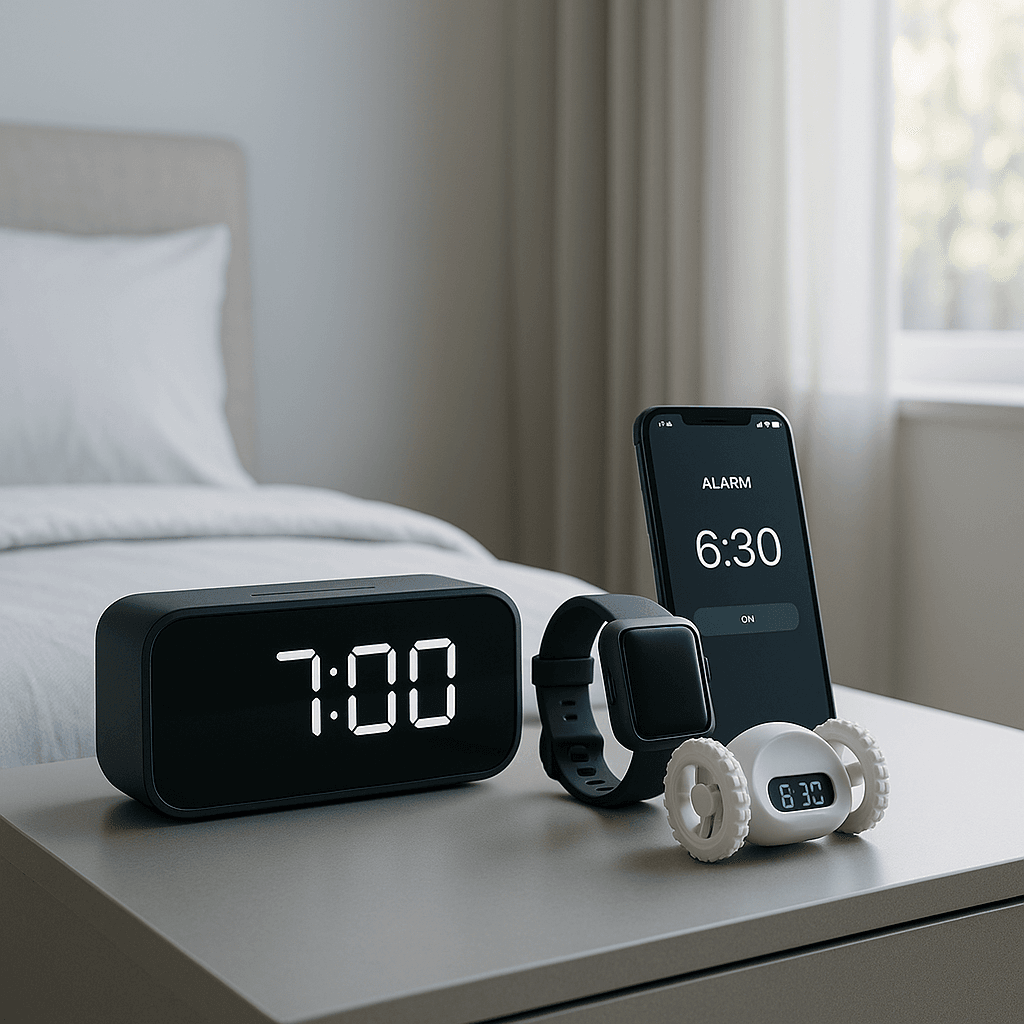Traditional phone alarms just don't cut it for heavy sleepers anymore. WIRED just tested the most extreme alarm clocks on the market - from shock-delivering wrist devices to rolling robots that literally run away from you. Their findings reveal a booming market of aggressive wake-up gadgets that promise to jolt even the deepest sleepers into consciousness.
WIRED just published what might be the most masochistic product roundup of 2024. Reviewer Molly Higgins spent weeks subjecting herself to increasingly aggressive alarm clocks, from devices that shock your wrist to robots that roll away from your bed. The results paint a fascinating picture of how far sleep-deprived consumers will go to defeat their snooze button addiction.
The standout winner wasn't the most extreme option. The Lasso Alarm Clock - a simple half-dollar-sized RFID chip that forces you to physically get out of bed to tap it with your phone - proved most effective at $49. "This device's simplicity is one of its biggest strengths," Higgins notes in the WIRED review. The chip requires no power, lasts 10 years, and can only be snoozed once.
But the real story is how willing people are to inflict pain on themselves for better sleep hygiene. The Pavlok Shock Clock 3 delivers actual electric shocks to your wrist at $160. "The zaps at full strength can be quite painful and feel like a mild electric shock," Higgins reports. "My skin has the red marks from zapping to prove it."
The device works through a brutal escalation - vibration, then beeping, then electric shocks up to five times. You can even set it to require 20 jumping jacks or scanning a QR code across the house before it stops shocking you. But Pavlok suffers from serious connectivity issues that left Higgins being continuously shocked when the Bluetooth disconnected.
The Alarmy app takes a different approach, forcing users through mental and physical challenges. Math problems range from "very easy" to "hell mode," while physical tasks include squats, steps, or photographing specific objects around your house. The premium version costs $5/month, but Higgins found it "extremely customizable" for different types of snoozers.
Traditional "sonic bomb" alarms are evolving too. The Sonic Bomb reaches 113 decibels (standard alarms hover around 60) with customizable pitch and volume - crucial for people with hearing loss in specific ranges. A 12-volt vibration pad can be placed under mattresses for silent wake-ups.












